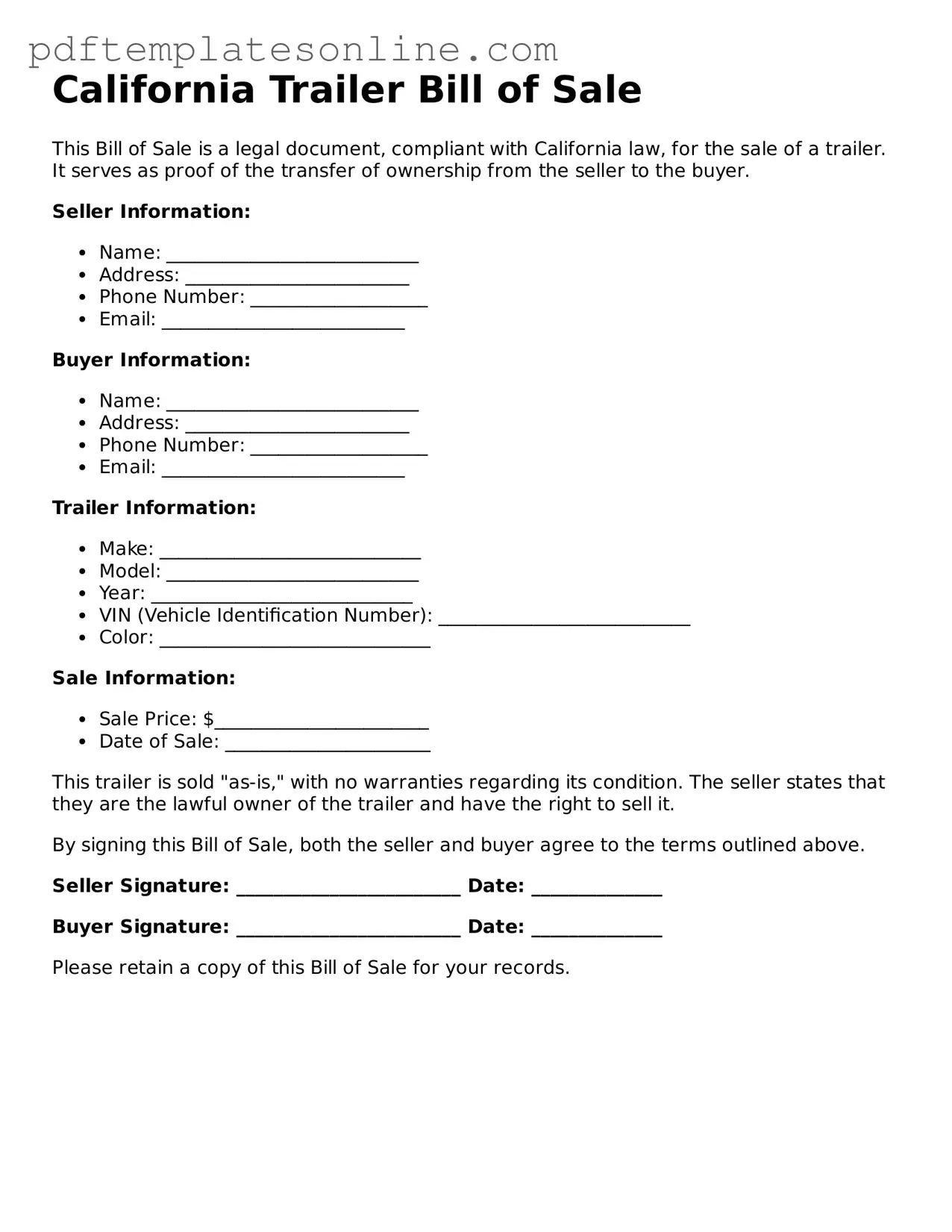Filling out the California Trailer Bill of Sale form can seem straightforward, but many individuals encounter pitfalls that can lead to complications. One common mistake is failing to provide accurate information about the trailer. It's essential to include the correct Vehicle Identification Number (VIN), make, model, and year. Missing or incorrect details can cause issues during registration or even legal disputes later.
Another frequent error involves not signing the document. Both the seller and buyer must sign the bill of sale for it to be valid. Without signatures, the form lacks authenticity, which can complicate ownership transfer. Remember, a bill of sale is not just a piece of paper; it is a legal document that requires proper execution.
People often overlook the importance of including the sale price. This figure should reflect the agreed-upon amount between the buyer and seller. If the price is omitted or incorrectly stated, it can lead to tax discrepancies and potential audits from the state. Always double-check that the sale price is clearly written.
Another mistake is not providing the date of the sale. This date is crucial for record-keeping and can affect the timing of registration and tax obligations. Without a clear date, both parties may face confusion regarding when the transaction took place.
Some individuals neglect to include the odometer reading at the time of sale. California law requires that this information be disclosed to the buyer. Failing to provide an accurate odometer reading can lead to accusations of fraud and may result in legal consequences for the seller.
It is also important to ensure that the seller has the legal right to sell the trailer. Some sellers may not realize that they need to have a clear title. If the trailer is still under a lien or has not been fully paid off, the transaction could be invalidated, leaving the buyer without recourse.
Inaccurate contact information is another common oversight. Both parties should ensure that their names, addresses, and phone numbers are correct and legible. This information is vital for any future correspondence or disputes that may arise after the sale.
People sometimes forget to make copies of the completed bill of sale. Having a copy for both the buyer and seller is essential for record-keeping. This documentation serves as proof of the transaction and can be helpful in case of any disputes or questions in the future.
Lastly, individuals may fail to check for any additional local requirements. Depending on the county, there may be specific regulations or forms that need to be completed alongside the bill of sale. Always verify with local authorities to ensure compliance with all applicable laws.
